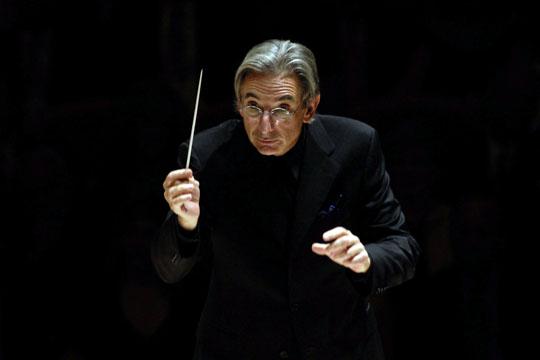When Schoenberg made his steroidal orchestration of Brahms’s G minor Piano Quartet he saw and heard what many don’t - that Brahms was more of a radical than the music world was ready to acknowledge, that he was not the conservative in the shadow of Wagner that commentators at the time felt the need to brand him. And yet at the heart of that orchestration, at the root of its motivation, was Schoenberg’s deep-felt reverence for the past, and who better to reveal that than an orchestra - the Vienna Philharmonic - so steeped in tradition that voices of approval from the likes of Brahms, and indeed Schoenberg, can be heard whispering through every phrase.
The cleverness of this Brahms-Schoenberg programme - conducted (and I suspect devised) by Michael Tilson Thomas as part of The Rest Is Noise festival - was in its choice of a beginning: Schoenberg’s late and resolutely tonal Theme and Variations, written in exile in America and sounding, as Tilson Thomas wittily put it in his brief introduction, “somewhere between Schubert and Kurt Weill”. Indeed Kurt Weill is at the head of this belated homage to Brahms's celebrated Haydn Variations as the trumpet-led wind band leads the cortege through the recesses of Schoenberg’s homesickness. There’s a lot of Richard Strauss in the mix - Le bourgeois gentilhomme busily darting through a couple of variants (one of a number of hybrid styles) - but the originality of the orchestration is always Schoenberg’s own and peppered with many unusual, sometimes spectral, instrumental combinations and the incongruity of the xylophone recalling the G minor Piano Quartet orchestration, but this time in an almost cheesy G major.
The rollicking central march episode almost transported us to New Year’s Day Vienna
In referring to that orchestration as “Brahms‘s Fifth Symphony” one wonders, in Schoenberg’s mind, where that left Brahms's Second Piano Concerto? This four-movement epic is so symphonic in nature and delivery that the piano often feels like a fully integrated part of the orchestral fibre. Yefim Bronfman played it with wonderful awareness of everything around him at any given time. And what was around him, shaped and phrased with such naturalness, especially by those extraordinary Vienna strings and their lightly inflected nuances, was a Brahmsian style that quite simply “took you back”. Aside from the flashes of grandiloquence what really lingered here and proved so affecting were the chamber-like intimacies, the eye contact between Bronfman and his solo cello partner in the slow movement and the quite extraordinary concentration of its still centre where a pair of clarinets and the distilled ruminations of the soloist engendered such fantasy.
If this is chamber music writ large then the G minor Piano Quartet orchestration is writ larger, largest. It’s a pretty heavy sauce that Schoenberg pours over the piece at times but Chef Tilson Thomas (who knows this recipe as well as anyone) kept it well aerated. The first movement needs careful handling if thickness of texture is not to triumph over articulation. But what is especially clever about Schoenberg’s treatment is the many moments where he goes back to solo strings in order to reconnect us to the original. Of course, he knew what was required in the slow movement and it was here that Tilson Thomas gave full rein to the famed Vienna sostenuto with burnished cellos and basses anchoring violins overreaching above the stave. The rollicking central march episode almost transported us to New Year’s Day Vienna, as did the insane "Gypsy Rondo" of the finale, with its wild articulations and one dazzling solo from principal trombone Ian Bousfield which will have recalled for conductor and player their glory days with the London Symphony Orchestra.
There was only one way to make an exit: more Brahms, more Hungarian fire, and more of that burnished and uniquely Viennese string sound. Nothing quite like it.














Add comment